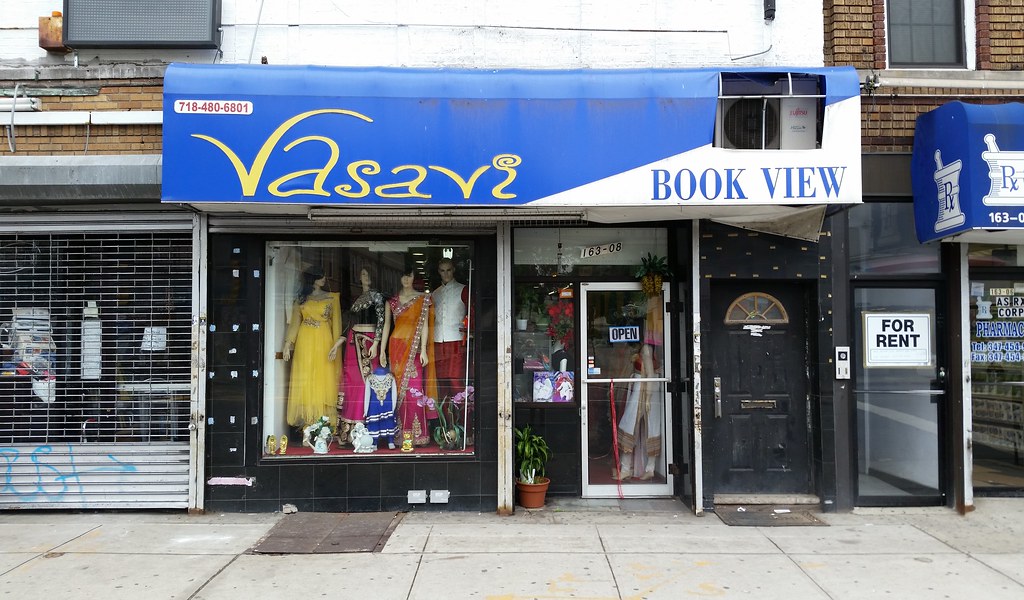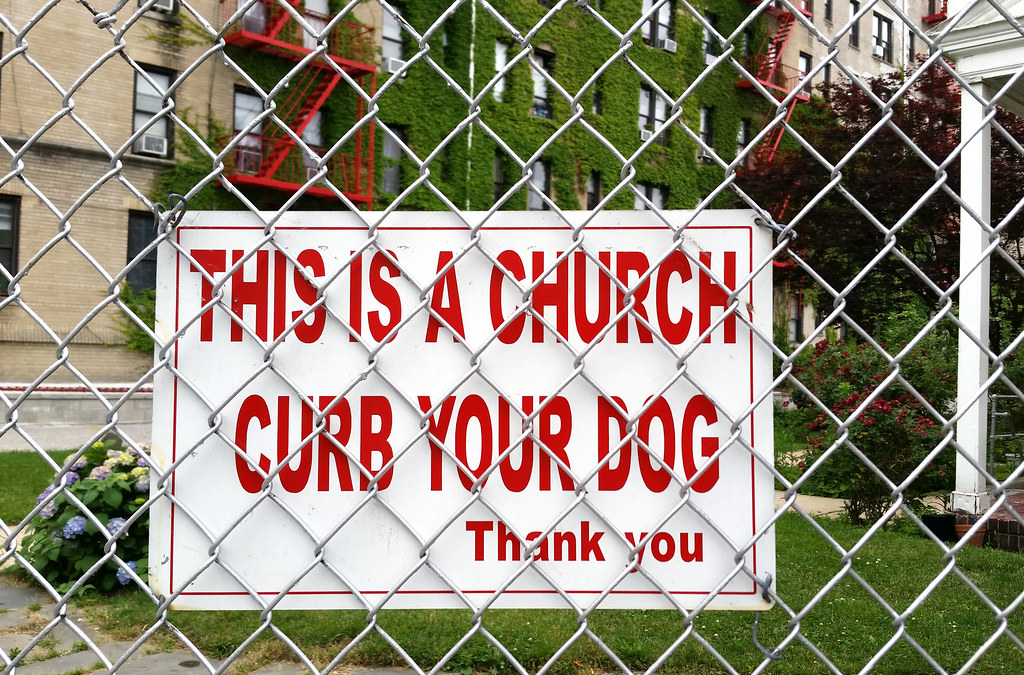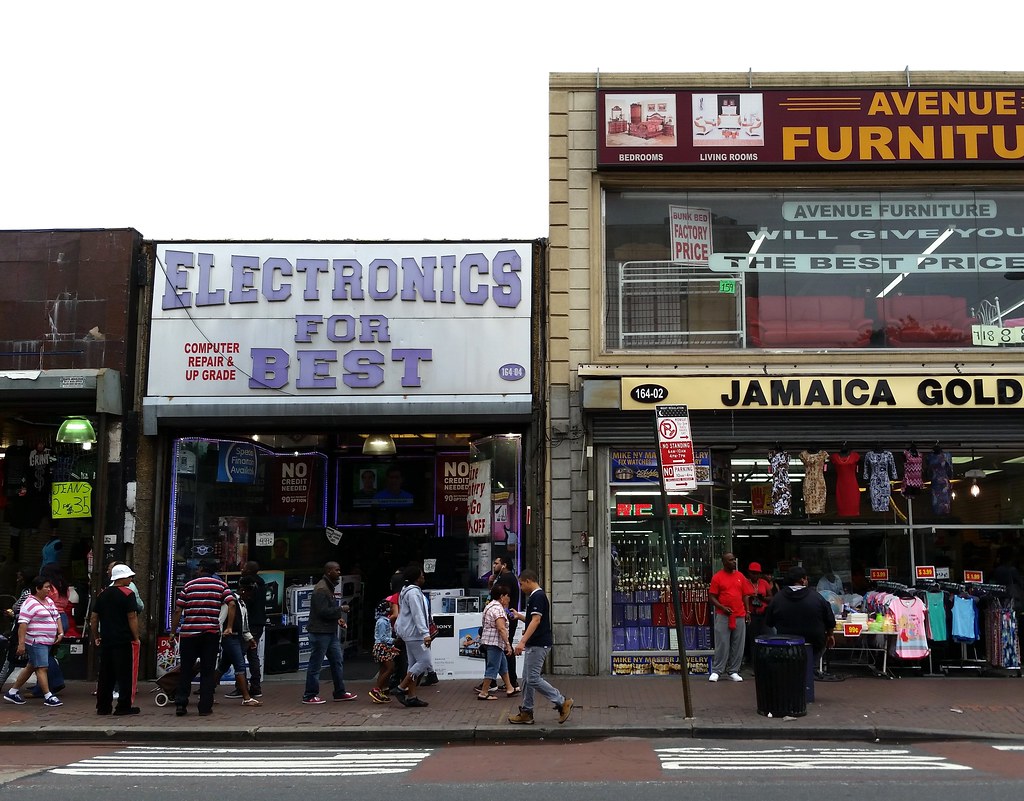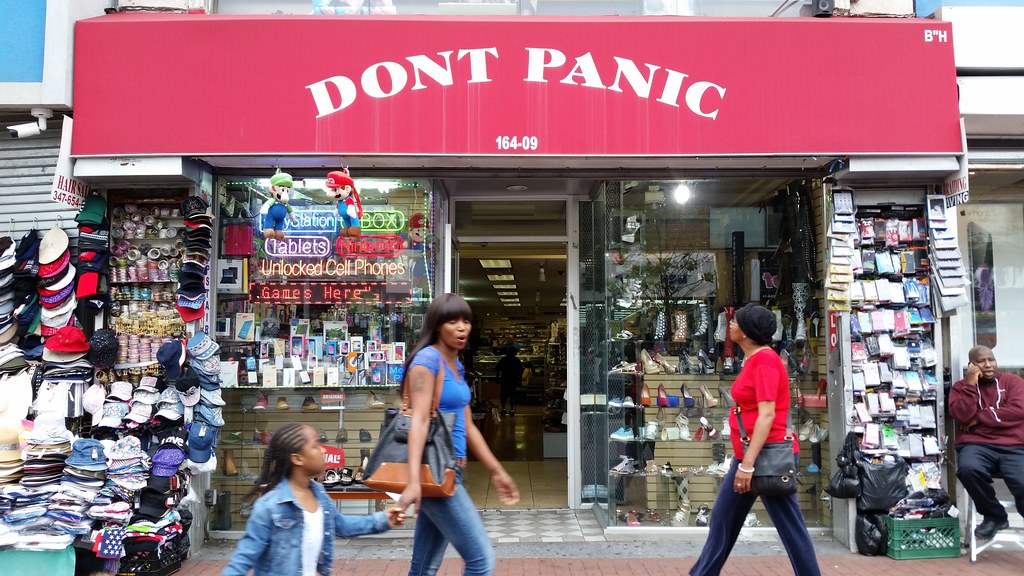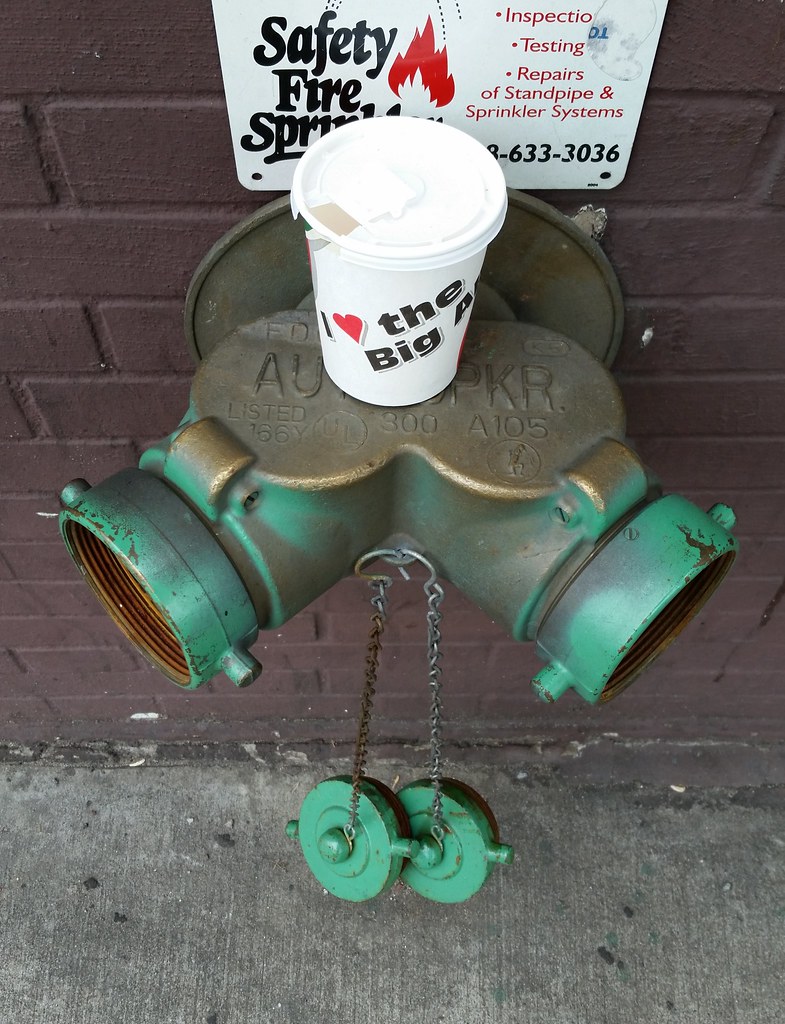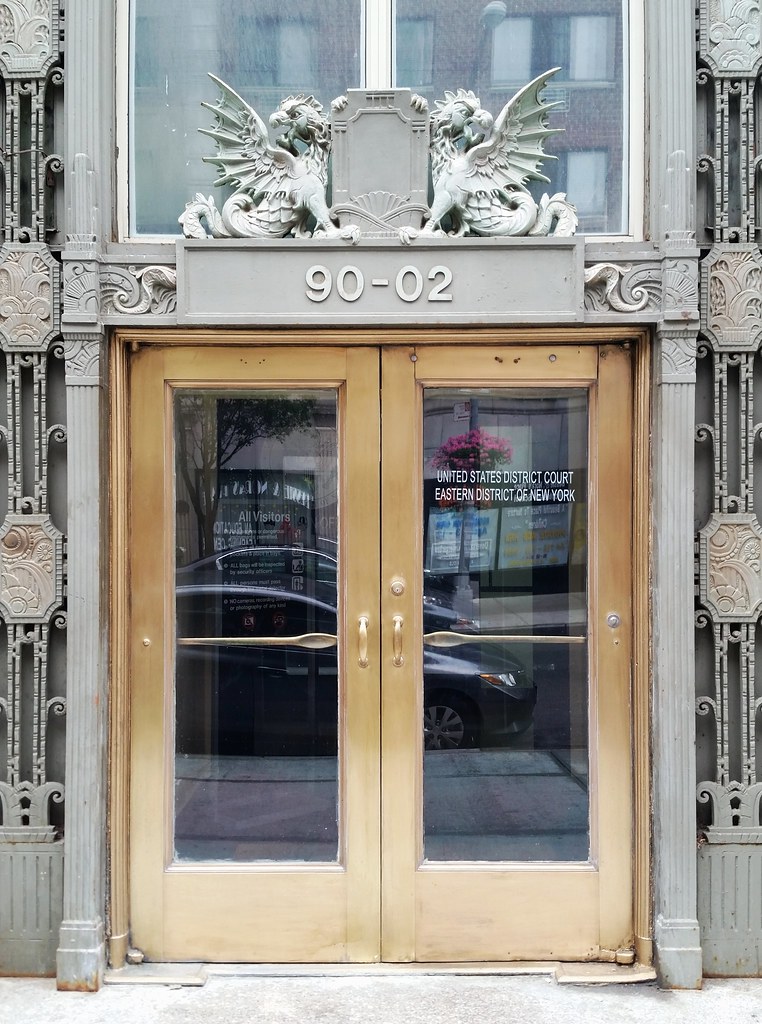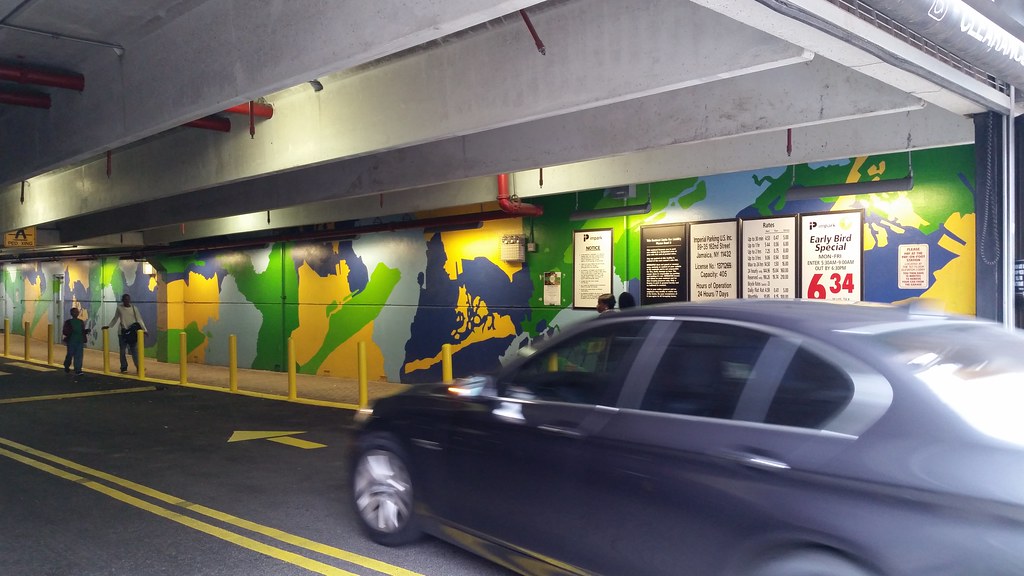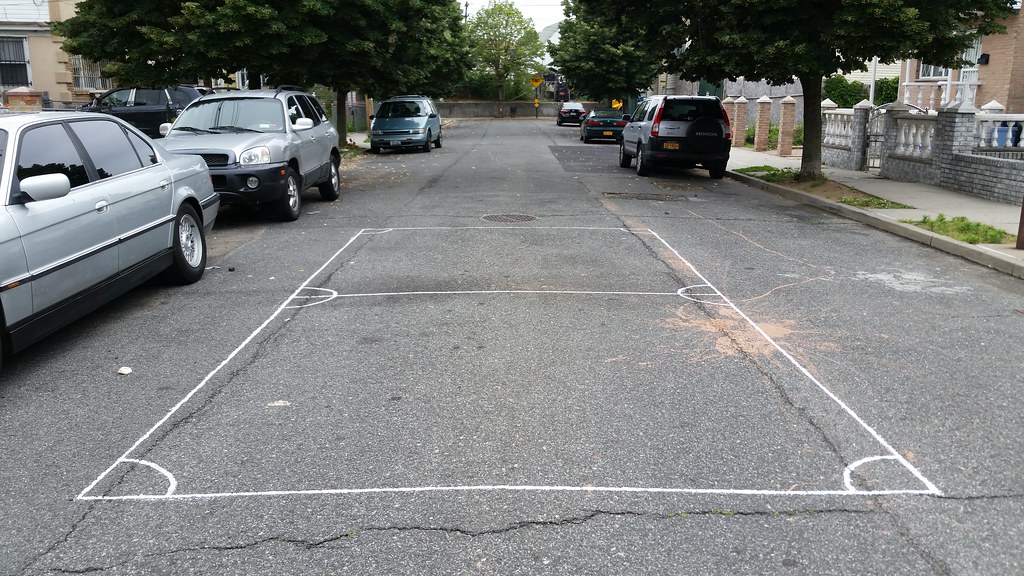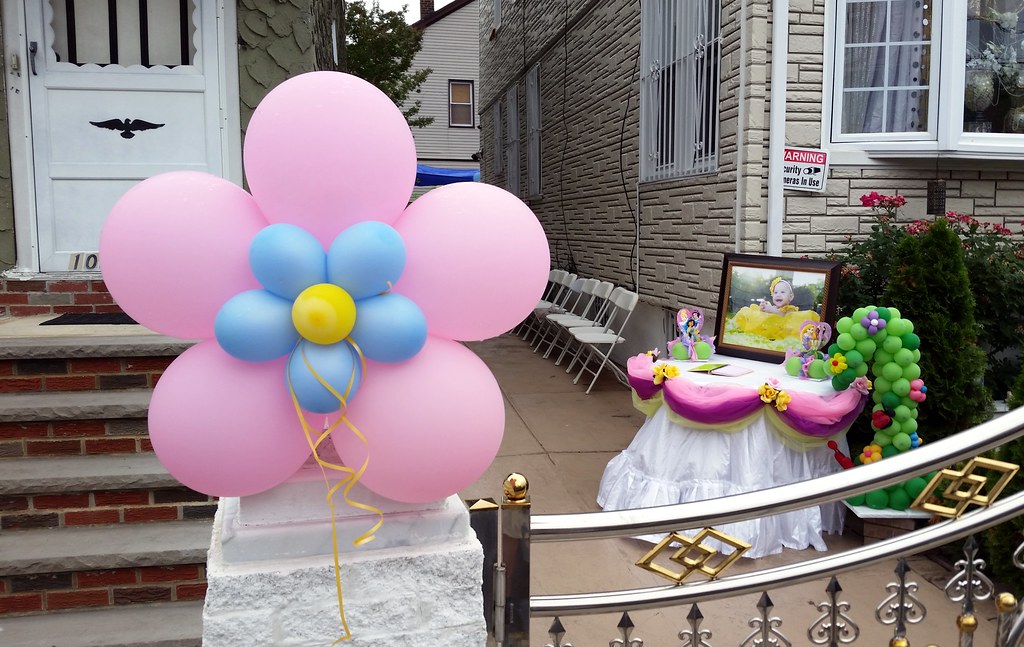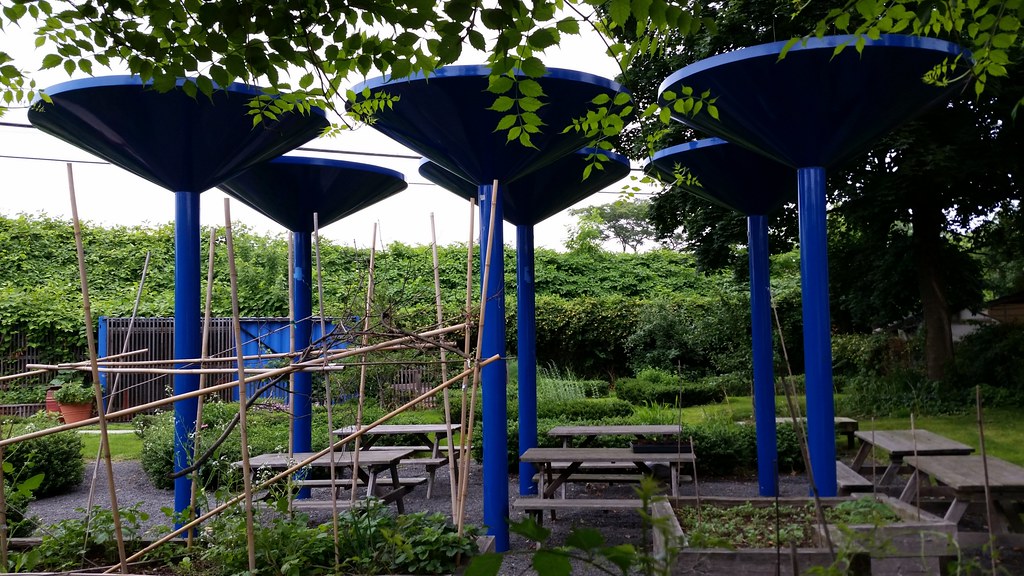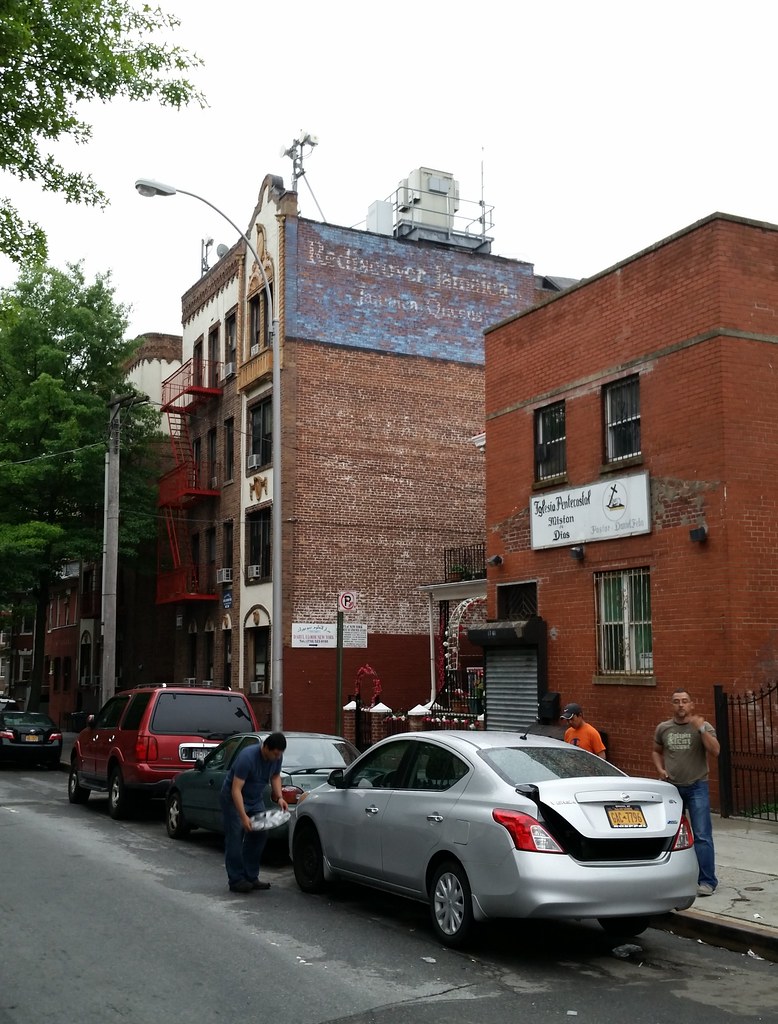

Baladev and Atmavir pick up some donated treats (packs of Trader Joe's roasted seaweed) after completing a lap on Day 7 of the 2015 Self-Transcendence 3100 Mile Race. A glance at the leader board reveals that Ashprihanal is still at the head of the pack, where he's been since he ran a remarkable 94.39 miles on Day 1.
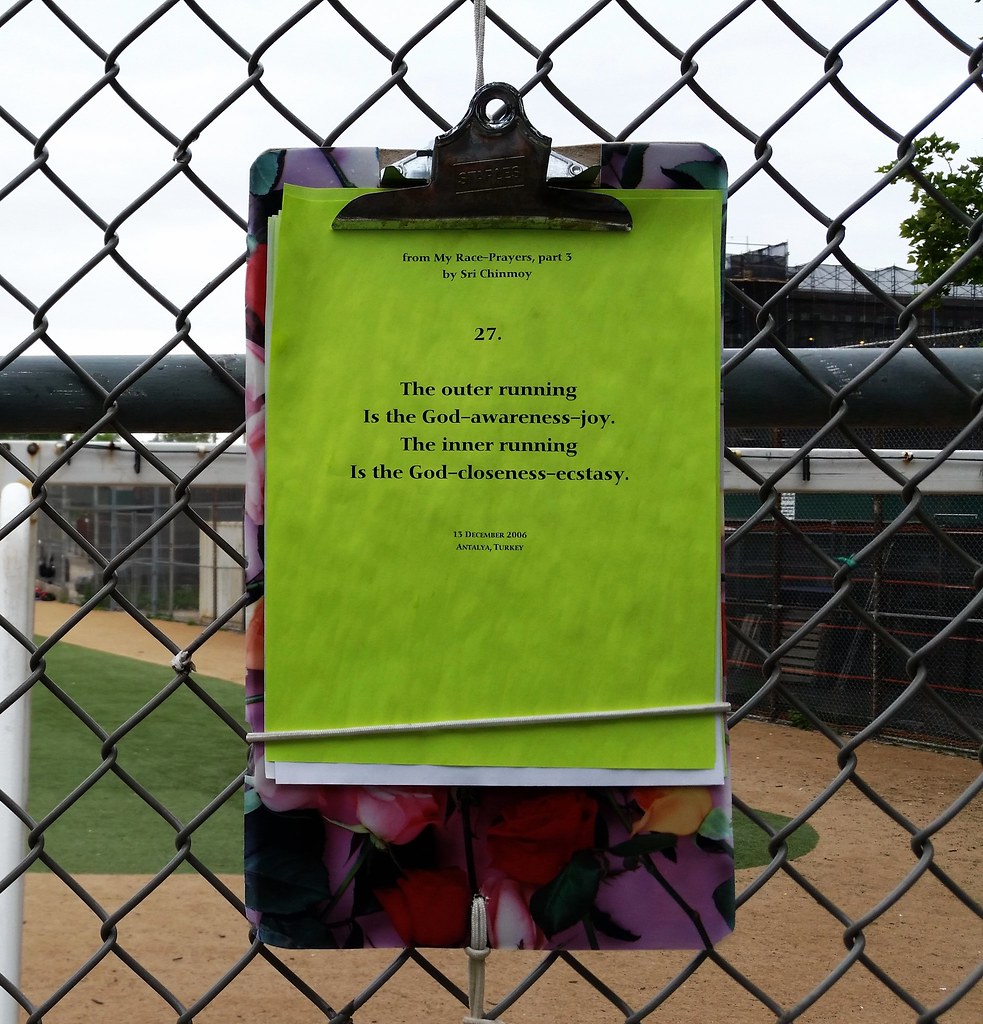
Taken from My Race-Prayers, part 3, this is one of the many "race-prayers" spontaneously composed by Sri Chinmoy at the end of a footrace.
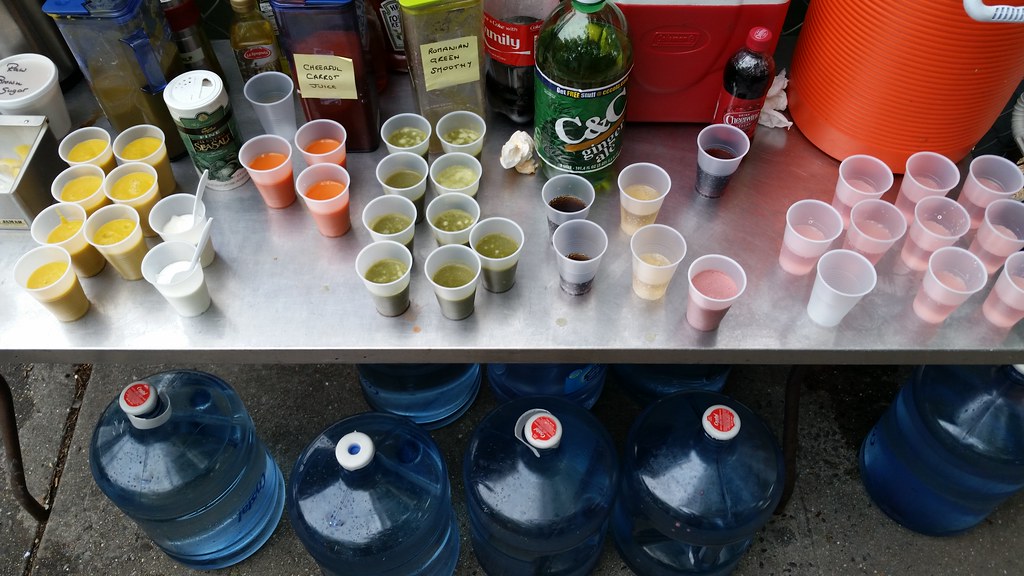
Cups of Cheerful Carrot Juice, Romanian Green Smoothy, and many other beverages have been set out for the runners of the 2015 Self-Transcendence 3100 Mile Race.
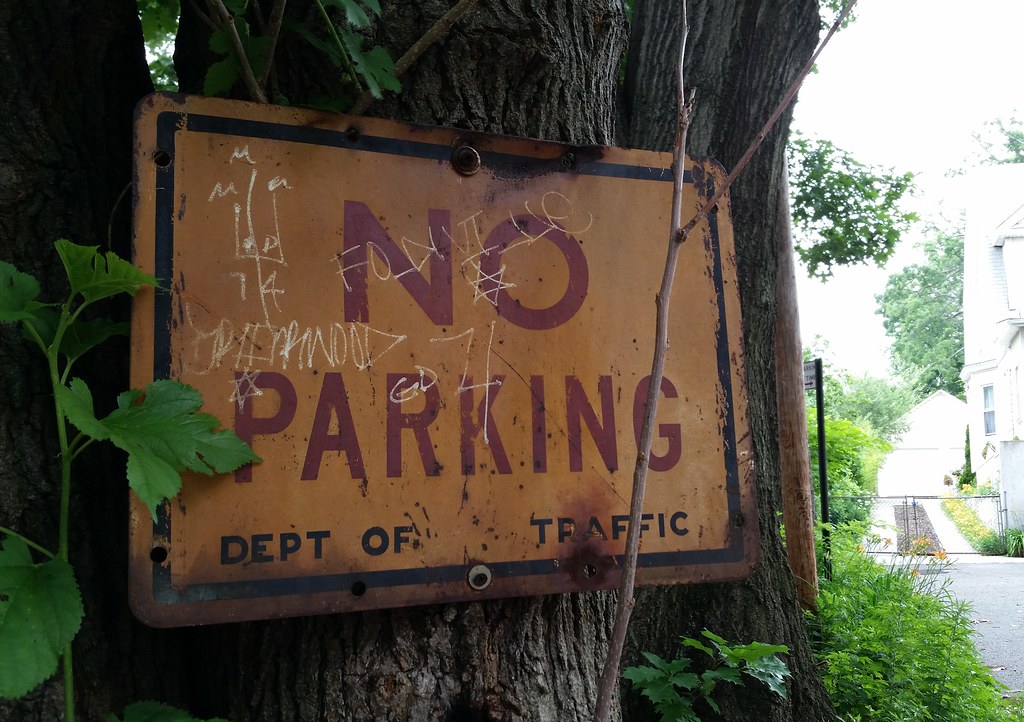
As far as I can tell, the Department of Traffic ceased to exist in the late 1970s or '80s, when it was folded into the city's Department of Transportation.
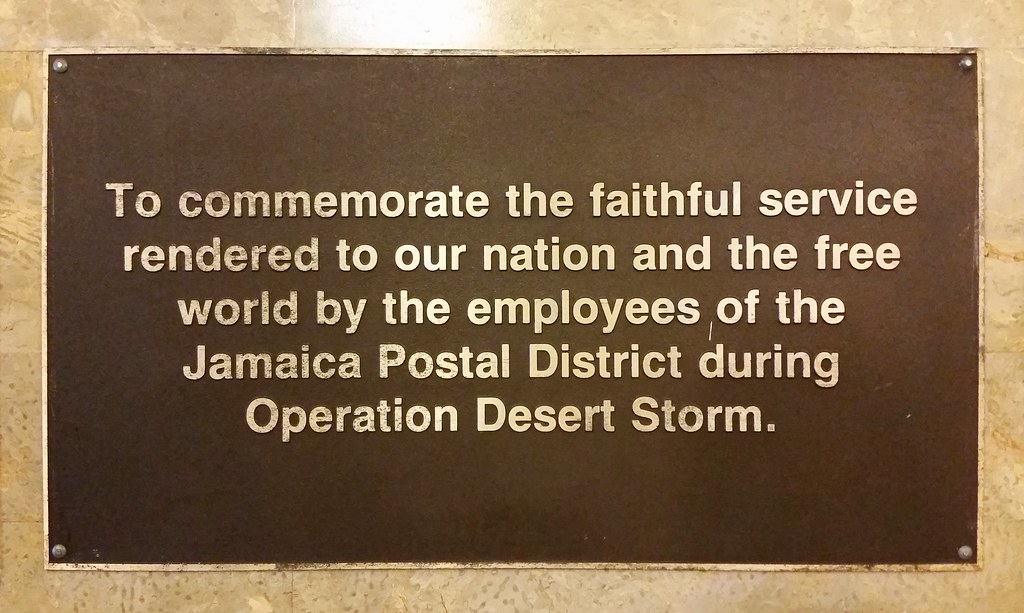
Other plaques here at the Jamaica Main Post Office pay tribute to the Jamaica Postal District employees who served in World War II and the Vietnam War.
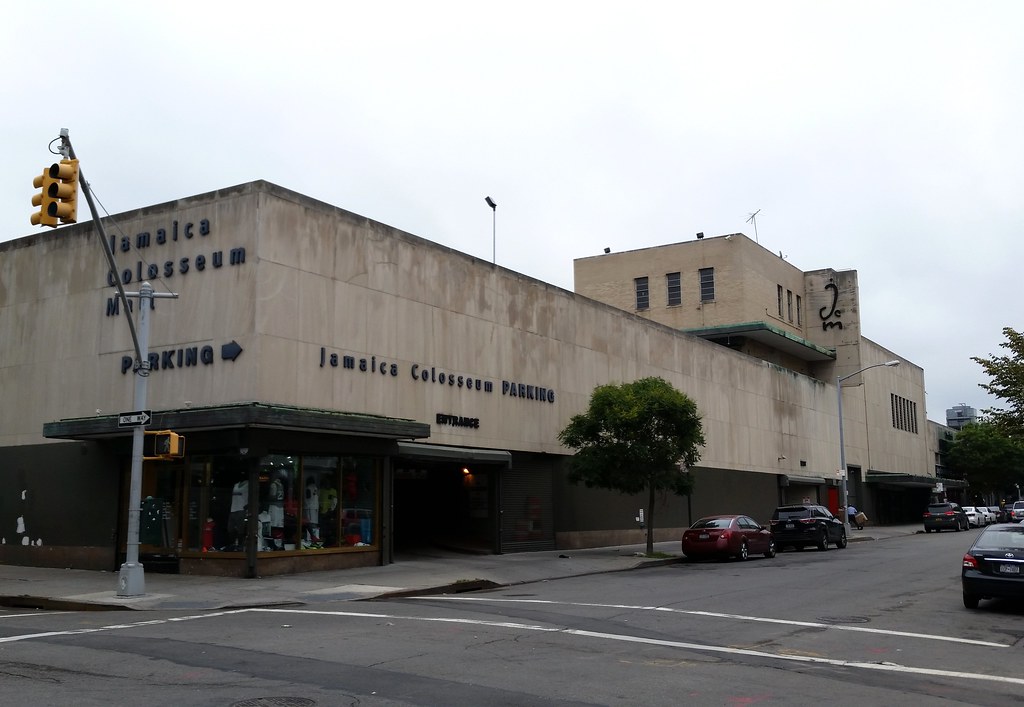
Opened in 1947, this "unsung modernist masterwork" was originally a Macy's. It's now home to the Jamaica Colosseum Mall, a collection of "over 120 merchants and jewelers under one roof".
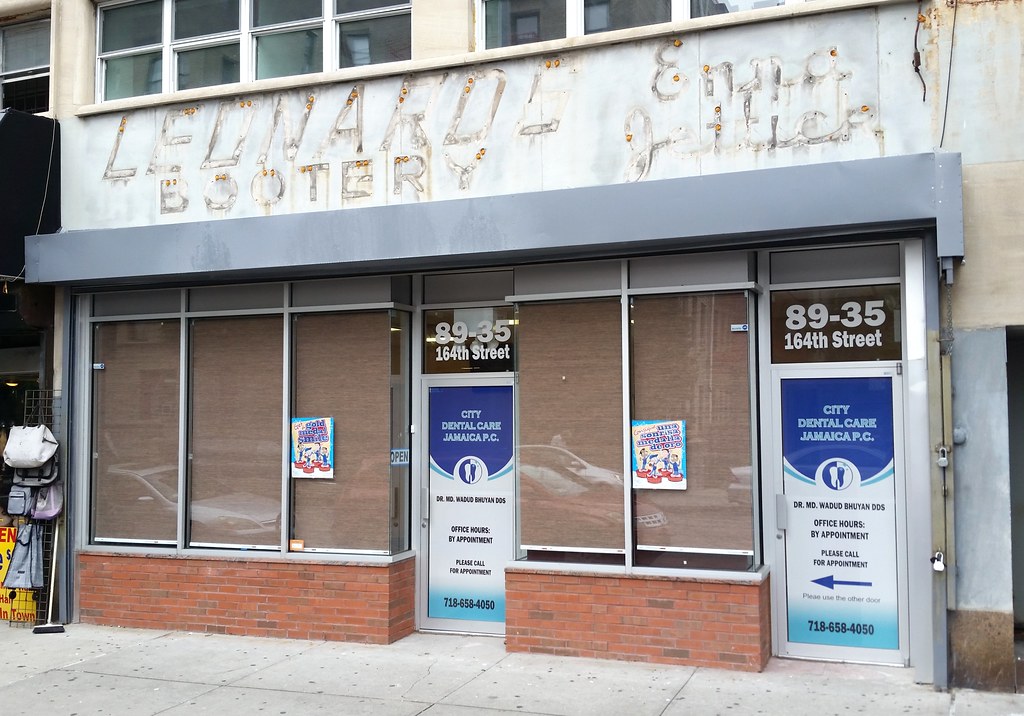
Enna Jettick: America's Smartest Walking Shoes!
Opened in 1939, Leonard's survived into the 21st century, and its neon sign was still intact at least as recently as 2013.
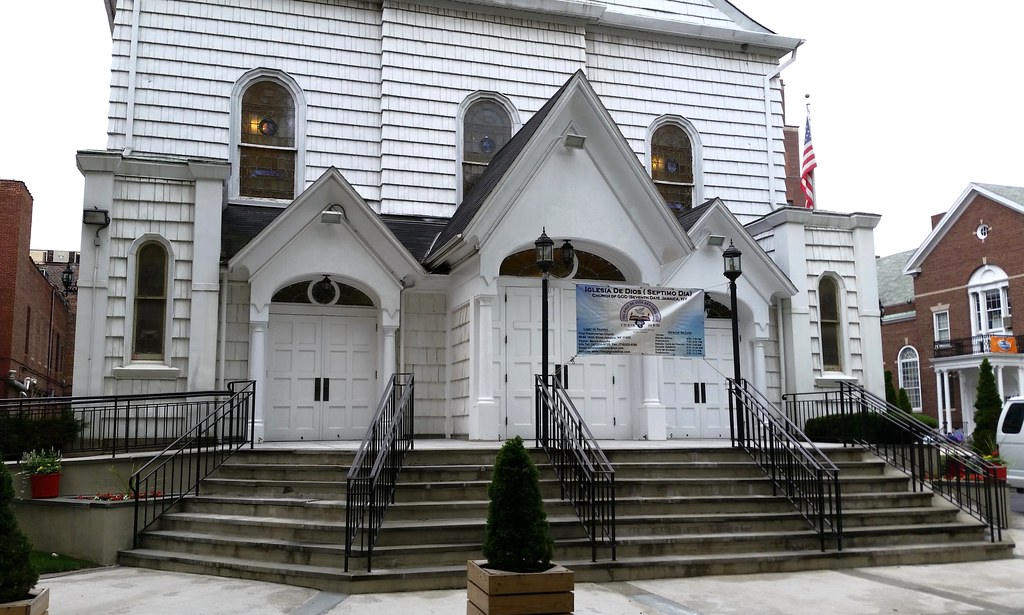
This 1813 building is home to "the oldest continuously serving Presbyterian congregation in the United States", founded in 1662.
UPDATE: This was Donald Trump's childhood church.
In many of the more relaxed civilizations on the Outer Eastern Rim of the Galaxy, the Hitchhiker's Guide has already supplanted the great Encyclopedia Galactica as the standard repository of all knowledge and wisdom, for though it has many omissions and contains much that is apocryphal, or at least wildly inaccurate, it scores over the older, more pedestrian work in two important respects.
First, it is slightly cheaper; and second, it has the words DON'T PANIC inscribed in large friendly letters on its cover.
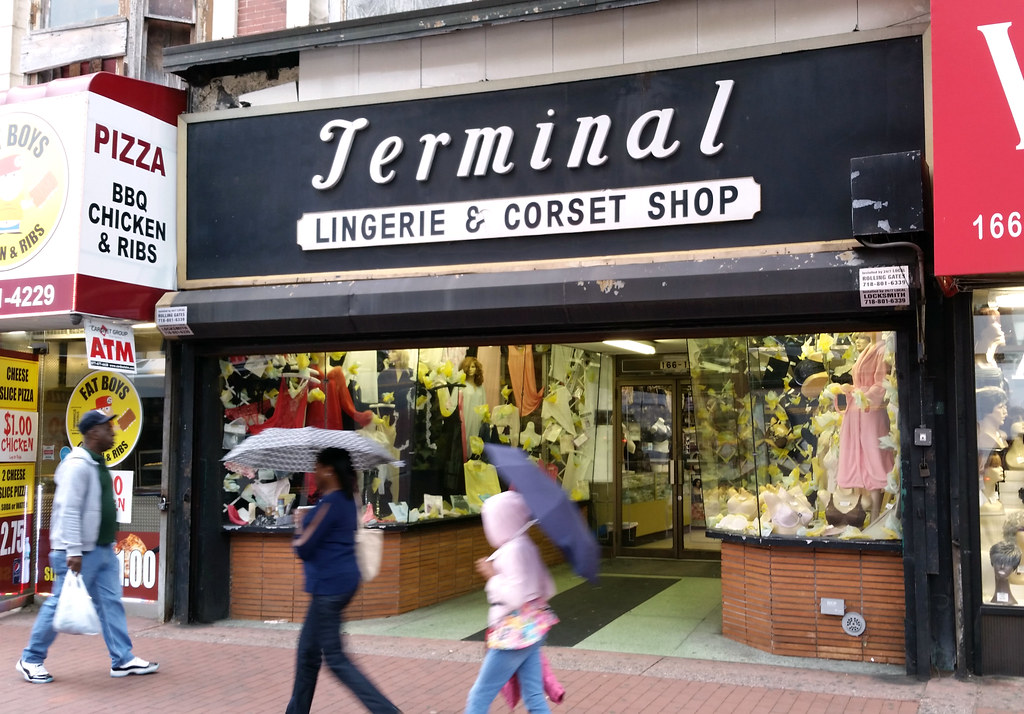
This store must have taken its name from the 168th Street terminal station of the Jamaica El, which stood here on Jamaica Avenue prior to its demolition in the late 1970s. A woman I spoke to inside couldn't confirm the name's origin, but she told me the store has been around for 60 years or so. A couple of Long Island Daily Press articles from 1933 and 1935 suggest the business may be even older, however, and the final survivor of a mini-empire of neighboring Terminal shops once located a few blocks away on what is now Guy R. Brewer Boulevard: Terminal Flower Market, Terminal Lingerie and Hosiery Shops, Terminal Pants Shop (where Fats Waller was a customer), and Terminal Wines & Liquors. (There was also once a Terminal Sea Food in the area.)
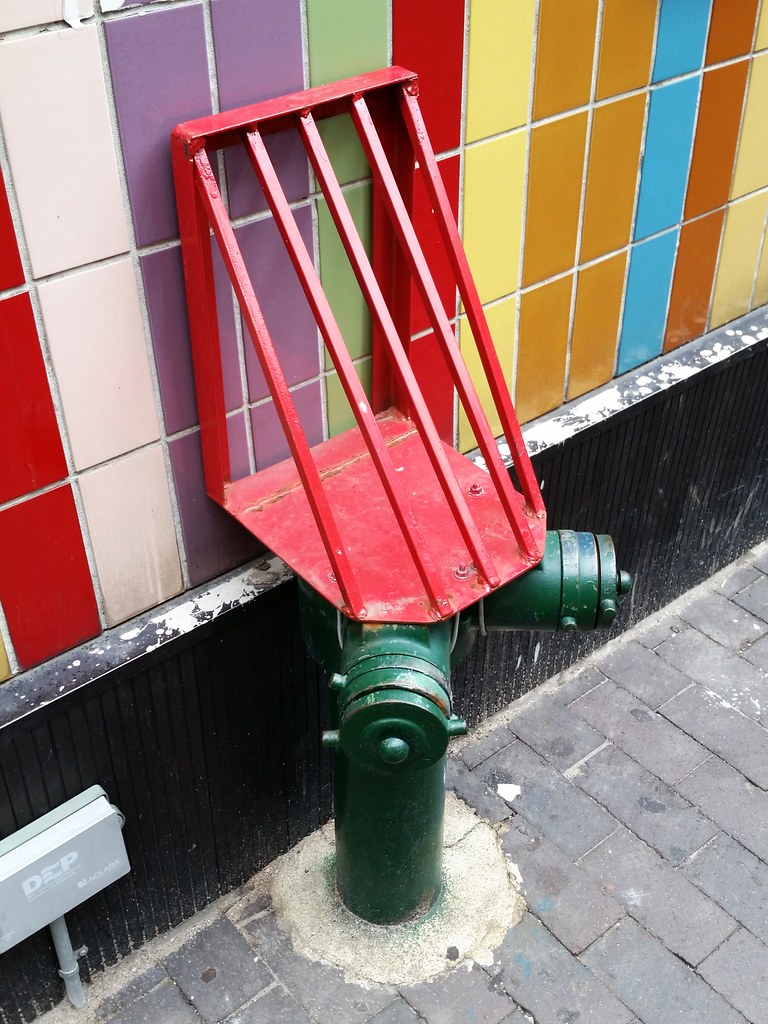
I've never seen this style of tushie tamer before. The last time I passed by this technicolor wall, the green Siamese sprinkler connection was completely unprotected — defenseless against the weary derrières of pooped-out passersby.
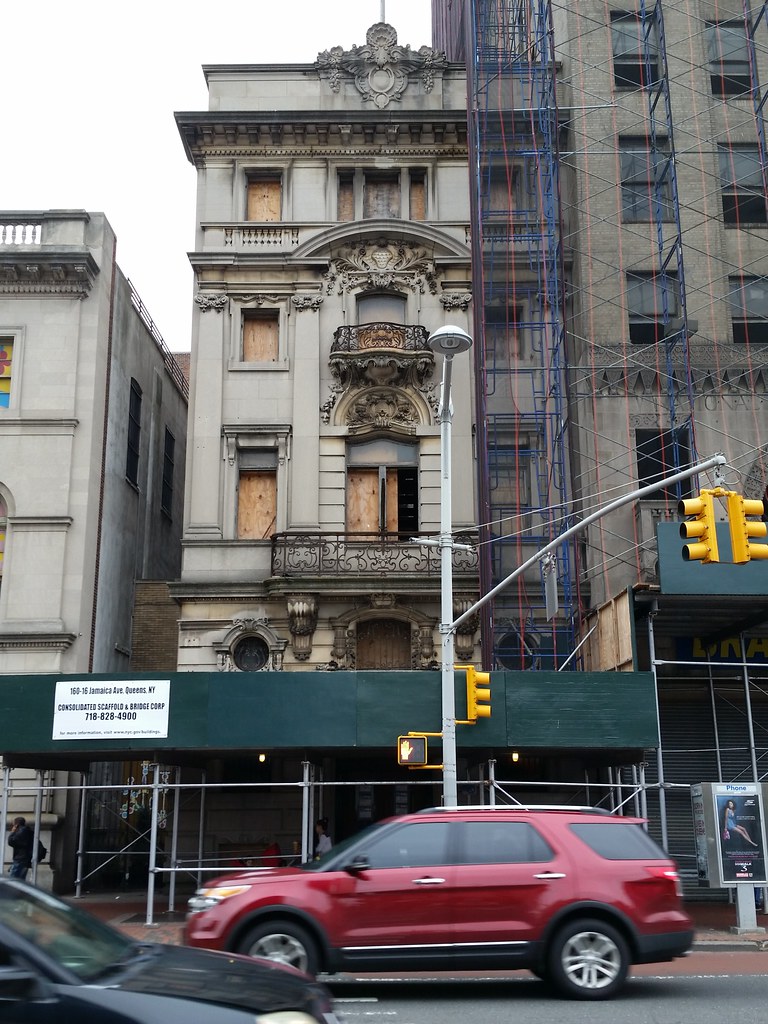
Constructed in 1897-98, the long-vacant Jamaica Savings Bank building "is a fine and particularly exuberant example of the classically inspired Beaux-Arts style strikingly executed in carved limestone and wrought iron, and is one of only a few buildings in the borough of Queens to embrace that architectural aesthetic. Prominently sited on Jamaica Avenue, the bank building is an urbane presence on the neighborhood’s main commercial thoroughfare. Although the four-story structure is relatively small in scale, the imposing design of the facade conveys a monumentality which is appropriately suited to the distinguished image and reputation of the banking institution, while lending the building the formal elegance of a private club or townhouse."
UPDATE (Oct. 2016): The old bank and its two neighbors to the right are being turned into a three-building retail complex. The 10-story tower that stood immediately to the right (visible above) has been knocked down and is being replaced by a structure similar in height to the bank building. Here's a rendering of the proposed development.

Built in 1895-96, the Dutch Revival-style PS 47, with its "witch's hat" dormers, was designed by the excellently named William B. Tubby. In 1909, the younger students were relocated and the building became the original Jamaica High School. In the decades since Jamaica High moved into its present home in 1927, the former PS 47 has served as a number of different schools; it is currently the Jamaica Learning Center.
(Note the undulating raised subway grates on the sidewalk.)
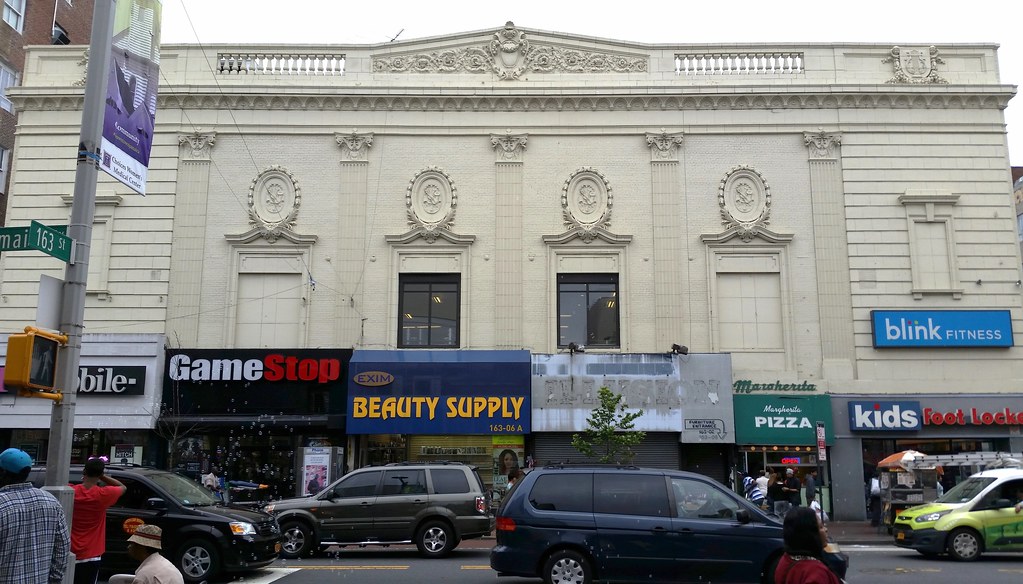
Much of the former Merrick Theater is now occupied by a Blink Fitness gym. But unlike the Harbor Fitness in Marine Park's old Nostrand Theatre or the New York Sports Club in the old Bay Ridge Theatre, this gym appears to have covered up all traces of the theater's interior.
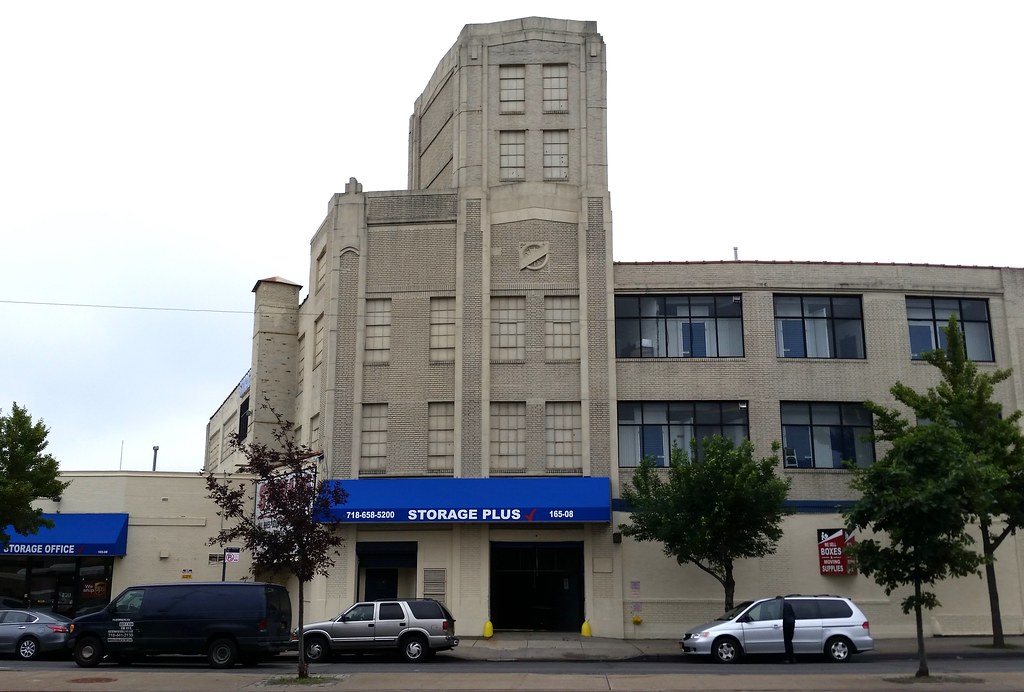
This is the third repurposed building I've seen with an old Studebaker logo on it. You can see the other two here and here.
(I've also come across a few Studebakers.)
UPDATE: Thanks to Gary Fonville for pointing out to me another former Studebaker building with a surviving logo on Howard Avenue between Eastern Parkway and Lincoln Place in Brooklyn. As it turns out, I once posted a photo of this building, but I didn't notice the old logo around the corner. Gary also mentioned a former Studebaker service station in Brooklyn on Dean Street between Franklin and Classon Avenues. When I walked by in 2012, the old service station looked like this. But it has since been "transformed into a creative and entrepreneurial hub".

This megachurch is led by the Rev. Floyd Flake, a former congressman. According to its website, Allen A.M.E. has more than 23,000 members and an annual budget, shared with its subsidiaries, of over $34 million. The Hartford Institute for Religion Research ranks Allen as the fourth-largest megachurch in New York State in terms of average attendance. (Topping the list is East New York's Christian Cultural Center.)
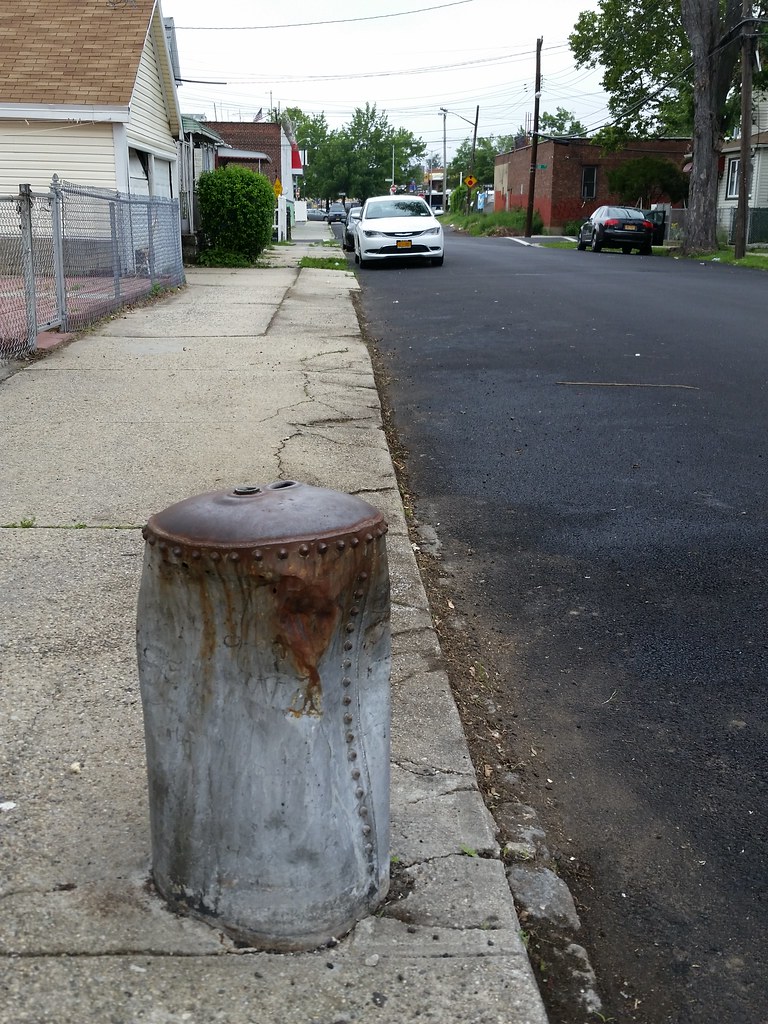
If you're in the mood for pondering such things, you might wish to inspect a photo of the other side and check out the location in Street View.

Eggplants, tomatoes, chard, kale, jhandis
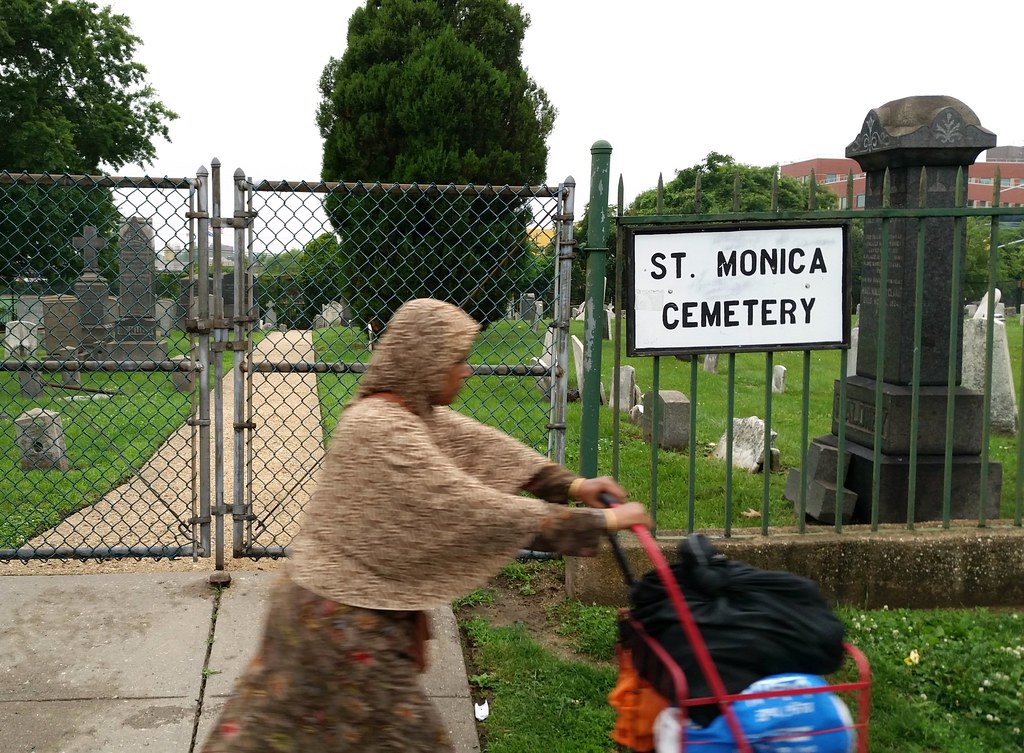
Along with Prospect Cemetery, First Methodist Church of Jamaica Cemetery, and the facade and bell tower of St. Monica's Church, St. Monica Cemetery, which appears to date back to the mid-1800s, is one of the few survivors from the days before York College came to town and wiped out 50 acres of South Jamaica that had, by the late 1960s, become an impoverished landscape of "tattered old homes, junk yards and parking lots". Compare aerial images from 1951 and 2012 to see how radically the area has been transformed. St. Monica Cemetery is the squarish open space at the southwest corner of Liberty Avenue and 160th Street.
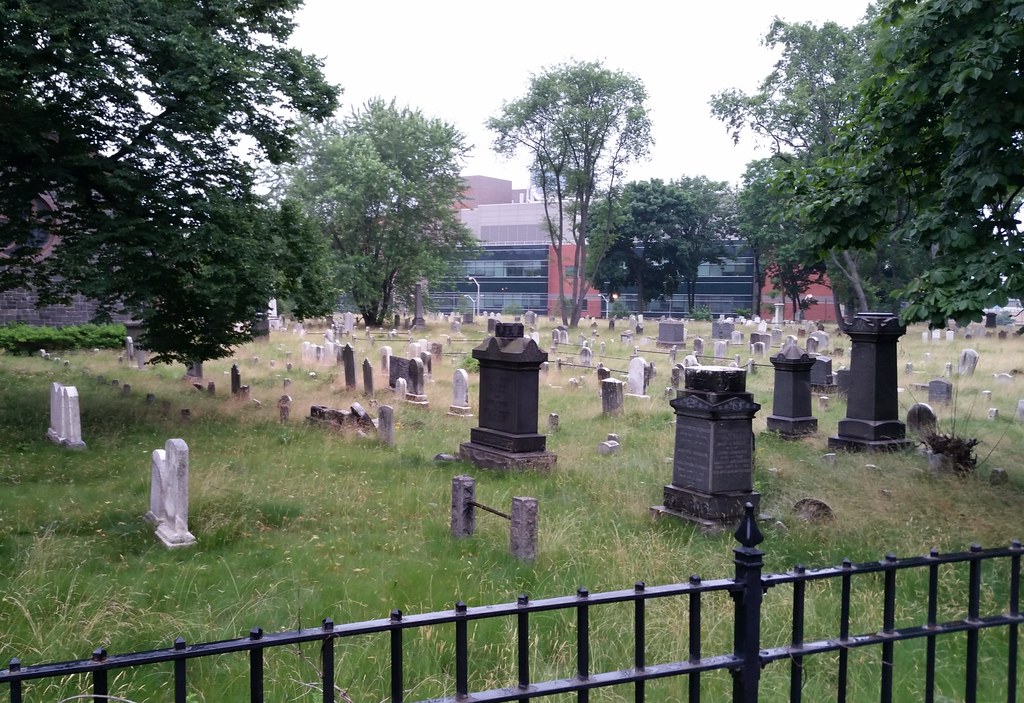
Established by 1668, Prospect Cemetery is said to be the oldest burial ground in Queens.

Dedicated in 1939, this monumental edifice was originally known as the Queens General Court House. At left, in front of the building, stands The Wheel of Justice. Completing the "sculptural ensemble" and "further activat[ing] the plaza" are 18 cylindrical benches inscribed with the names of Queens neighborhoods.
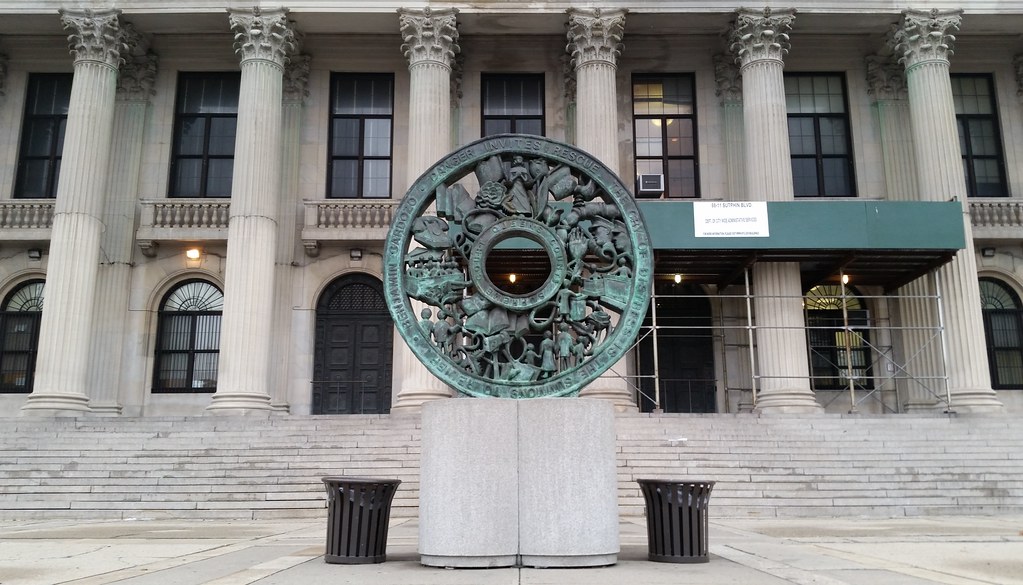
Installed in front of the Queens Supreme Court Building in 1998, this bronze sculpture (zoom in) "tells the narrative of the court process and also includes the tulip and rose design taken from the Queens [Borough] flag. Images include: judge, jury, and notification of jurors."
The quotation found on the wheel — "Danger invites rescue. The cry of distress is the summons to relief" — is taken from Benjamin Cardozo's opinion in Wagner v. International Railway Co., "the paradigmatic case establishing the rescue doctrine".


